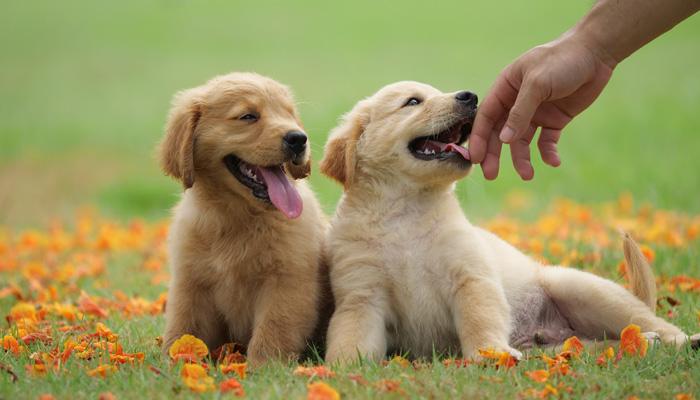
What is Positive Reinforcement (PR)?
You might have heard of the phrase “positive reinforcement”, and perhaps some explanations as to what it is. This term has two different meanings. It can be used as a method to help dogs and other pets learn new skills.
Positive reinforcement is superior to other techniques because it strengthens animal behavior and builds relationships of trust between the pet parent and his or her companion. It also protects behavioral health in pets.
Reinforcement is simply a way to strengthen a certain behavior. Positive and negative reinforcement are the two types of reinforcement.
Positive Reinforcement vs. Negative Reinforcement
Positive Reinforcement
When you use positive reinforcement to train a dog, it’s important to remember that “positive” doesn’t necessarily mean “good”. It simply means “added”. Reinforcement is a way of making something stronger. This method is used to teach a puppy. You add something after the behavior that strengthens that behavior for the duration of the training. We add something that the dog enjoys or desires, such as a tasty treat or belly rub. Positive reinforcement is not achieved if the dog’s behavior does not occur consistently for a certain period of time.
As an example, you could teach your dog not to use your hardwood flooring but instead potty outside. Wait quietly for your dog to finish eliminating. When they finish, reward them with some tasty treats and praise verbally. It will encourage them to go outside and do their chores. It should happen now more often because this is being reinforced positively.
Positive reinforcement isn’t working if you train your dog, but the behavior you want doesn’t happen more frequently when you ask. Positive reinforcement does not work is an untrue statement. The more accurate statement is “positive reinforcement did not occur,” meaning that there was something wrong in the execution.
It is also up to the dog what reinforces and does not. A dog who just finished a meal may not see food as motivating as being able to go outside and play in order to release the excess energy. A dog who has exercised for one hour but hasn’t been fed in several days may be more likely to find food reinforcing.
Negative Reinforcement
Negative reinforcement is a component that can be confusing. Negative does not equal bad. It simply means that something has been taken away. Positive and negative reinforcers are both similar in the way they strengthen behavior.
Positive reinforcement is adding something instantly after a particular behavior has occurred, and negative reinforcement is taking away something instantly after that behavior. Negative reinforcement is when the dog is removed from something they find unpleasant. If the dog perceives something as scary (like a stranger running towards them or trying to pet them), they might snap. Snapping can be negatively reinforced if the frightening thing goes away or stops.
It is difficult to use negative reinforcement. When used in the traditional way, it can be confused with punishment and is not an effective method of training your pet. This is because the dog must face something that they are trying to avoid, such as something painful, frightening, intimidating or threatening. There are consequences the moment a person introduces something bad into a pet’s environment. Negative reinforcement can have three major consequences:
- Create a negative emotional condition
- Trust with the handler eroded
- Increased anxiety and fear
The Positive Reinforcement Movement is also a movement
Positive reinforcement also is a philosophy based on the idea that as pet owners and professionals, it’s better to reinforce the behaviors we desire, rather than reacting to and punishing the ones we do not.
The way that punishment is used can have multiple negative effects, such as a statistically increased fear-based behavior or likelihood of aggression. The training should be a rewarding and fun way for you to interact with your dog.
What is Positive Reinforcement and How do you use it?
Positive reinforcement is a method of training dogs. You give a verbal or physical prompt, then wait until the dog completes the desired behavior. Then you reward the dog. This process should be repeated several times in order to evaluate the changes. Does the dog sit more consistently, more often, or quicker?
If sitting on command does not happen more frequently, then you are not positively reinforcing the behavior.
Markers can also be a useful tool. The clicker is one of the most popular training markers. The clickers help the dog understand what they have done to deserve the reinforcer. The marker is used to indicate the precise moment that the dog completes the task, just before the reinforcer arrives. If you want your dog to stand, then wait until the bottom of the dog touches the ground and immediately “mark” this moment with the marker. Deliver the reward. A professional certified trainer will help you click in no time.
Use Positive Reinforcement to Improve Your Child’s Behavior
- Tracking your training will let you know if you’re improving. When you tell your dog to stand, does it do so immediately?
- Environments for training: Make sure there are very few distractions when you practice a new behavior with your dog.
- Choose your reinforcers carefully: Use something that you are sure will satisfy your dog in a structured training session. They decide on what reinforces and what does not.
- Mark the behavior: Marking a behavior works as a second reinforcer, as long as it is paired with a primary reinforcer.
- The session should be fun and short: Select one skill and work on it in 5-minute increments, adding verbal praise as your primary reinforcer. Take breaks and finish the session when the dog still enjoys it.